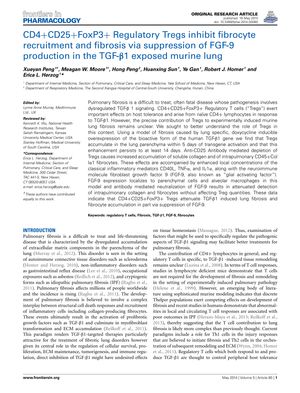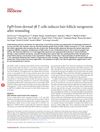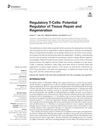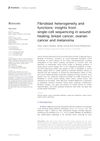CD4+CD25+FoxP3+ Regulatory Tregs Inhibit Fibrocyte Recruitment and Fibrosis via Suppression of FGF-9 Production in the TGF-β1 Exposed Murine Lung
May 2014
in “
Frontiers in Pharmacology
”

TLDR Special immune cells called Tregs can help prevent lung scarring by blocking a specific growth factor.
The study explored the impact of CD4+CD25+FoxP3+ regulatory T cells (Tregs) on lung fibrosis in a murine model, finding that Tregs can reduce fibrosis and fibrocyte recruitment by suppressing the production of fibroblast growth factor-9 (FGF-9) in response to transforming growth factor-beta1 (TGF-β1). Depletion of Tregs resulted in a 21.2% increase in lung collagen and a 1.61-fold rise in CD45+Col Ial+ fibrocytes, while neutralizing FGF-9 led to a 55.3% reduction in lung fibrosis and a 57.5% decrease in fibrocytes, without affecting Treg levels. The study, which used 5 mice per group, suggests that Tregs play a protective role against lung inflammation and fibrosis, and that FGF-9 is a key mediator in this process. Further research is needed to fully understand the interactions between Tregs, macrophages, fibrocytes, and inflammation in lung diseases.





